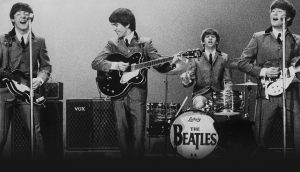By Chloé Margulis
Staff Writer

While “50 Shades of Grey” was released in theaters on Feb. 13, just in time for Valentine’s Day, is watching it with your significant other the best gift in store? Poor acting and lack of chemistry, combined with sexual activity and promiscuity, led to much controversy upon the release of the film, based on the popular erotic romance novels by E. L.
James. At first glance, the film is complemented by nice cinematography and music – a definite eye catcher. Within the first few minutes, college student Anastasia Steele (Dakota Johnson) is introduced to young, wealthy entrepreneur Christian Grey (Jamie Dornan), having to interview him for her school newspaper. From the moment they meet, a lack of chemistry between the actors is evident, making future scenes awkward and uncomfortable for the viewer to watch.
In addition, the movie is filled with a series of clichés. For example, Ana is made out to look like the socially awkward ‘Plain Jane’. When she is summoned to Christian’s office, she falls flat on her face while opening the door, thus representing an awkward, innocent young woman, in contrast to the domineering, experienced Mr. Grey. Furthermore, the meeting scene was filled with poorly acted sexual references; for example, Ana asks Christian if he is gay while chewing on a pencil with his name on it and batting her eyelashes at him.
There is a failure in the story to develop a realistic intimacy between the characters. Within the first fifteen minutes of the movie, it was as if the two had known each other for a much longer time; Christian appears at the hardware store Ana works at to buy rope, masking tape, and cable ties. These are things she presumed he would use for house projects when in reality he uses them in his sexual playroom. In this scene, and many others, there is a lack of substantial conversation that would help develop the characters and the story.
Instead of meaningful interaction, the characters engage in sexual references and flirty small talk, all revolving around sex. For example, Ana tells Christian to use coveralls during his home projects. He responds that he would rather work sans clothes – another sexual reference most people who have just met would not say. Christian saves Ana from a bike nearly hitting her in the street, saying, “I am not the guy for you. You should steer clear of me.” Inevitably, the female protagonist can’t stay away, and she ends up crawling back to him and his lair of sexual preferences.
Eventually, Ana becomes so enthralled with him that she can’t leave, and yet she never signs the contract he has all “submissive” – women who agree to have sex with him – sign. The contract gives Christian consent to do whatever he wants to Ana sexually. When he brings her in his helicopter for the first time and straps her in, he says, “No escaping now.” This foreshadows the future scenes in the playroom, where he binds her for sexual activity. Ana is consistently tied up without her consent, demonstrating why this movie is seen as controversial.
Ana agrees to be his submissive without signing the contract, and tells Christian that she refuses to be whipped and put in pain. Despite her complaints, she is whipped. He teaches her to be an obedient sex slave, doing everything he demands from her. When she refuses to sign the contract, Christian shows up at her apartment, binds her to the bed, and consensually violates her. “50 Shades” thus implies that it is okay for women to be submissive to men and their desires.
This movie also gives people the wrong idea about sexual pleasure. Christian relates helping poor and impoverished hungry people to the hunger he experiences when he craves someone sexually – this is not the wisest correlation to make, nor one that promotes a truly healthy relationship. The screenwriters chose to demonstrate his lust for someone over true love, which further affirms the abusive elements of this film.
This movie also demonstrates emotional abuse. Christian is not very nice to Ana, especially with his consistent mood swings, and she becomes emotionally scarred after he guilts her for demonstrating emotions of love towards him. “50 Shades” doesn’t leave the viewer with a settled opinion about love. Rather, it exposes the viewer to sexual and emotional abuse, abuse that the screenwriters attempt to normalize.
Finally, the movie opens and closes with a rainstorm, symbolizing the cleansing of Ana’s soul. In the beginning, the cleansing is the foreshadowing of her losing her virginity, and by the end, the cleansing of her sins in her consent to sexual activity with Mr. Grey. There is good closure to the film, but with this closure comes a cliffhanger, one that most likely means there are more films to come, following the book trilogy.
Overall, the film did have some good qualities, such as the music, cinematography, few bursts of traditionally romantic scenes, and closure that is somewhat satisfying. However, the negatives outweigh the positives. The film lacked substantial conversation, character and story development, focusing mostly on sexual innuendoes. The lack of chemistry between the two actors made it even more unattractive to watch. “50 Shades of Grey” is fifty shades of not worth your time.



Be First to Comment